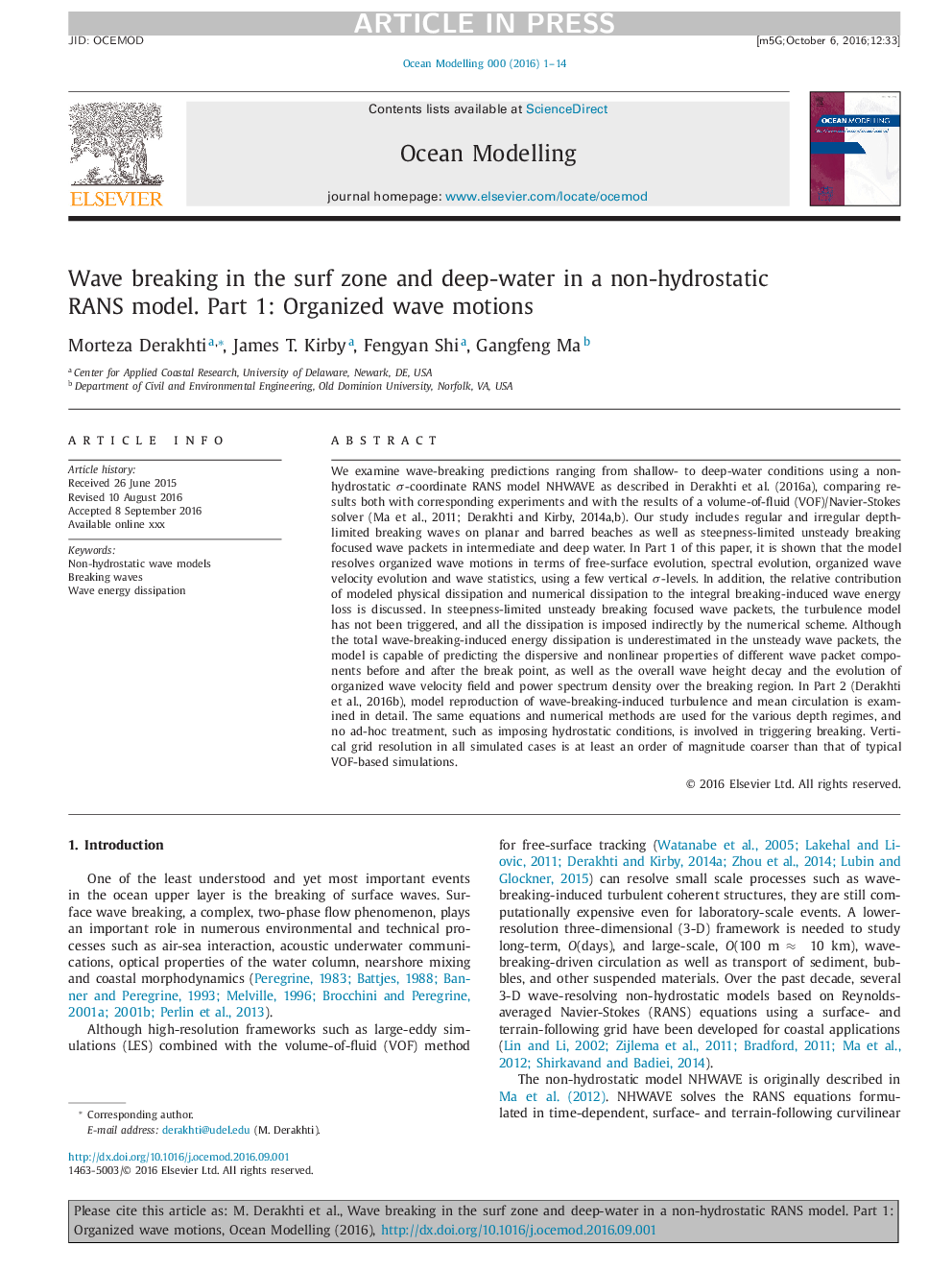| Article ID | Journal | Published Year | Pages | File Type |
|---|---|---|---|---|
| 8886564 | Ocean Modelling | 2016 | 14 Pages |
Abstract
We examine wave-breaking predictions ranging from shallow- to deep-water conditions using a non-hydrostatic Ï-coordinate RANS model NHWAVE as described in Derakhti et al. (2016a), comparing results both with corresponding experiments and with the results of a volume-of-fluid (VOF)/Navier-Stokes solver (Ma et al., 2011; Derakhti and Kirby, 2014a,b). Our study includes regular and irregular depth-limited breaking waves on planar and barred beaches as well as steepness-limited unsteady breaking focused wave packets in intermediate and deep water. In Part 1 of this paper, it is shown that the model resolves organized wave motions in terms of free-surface evolution, spectral evolution, organized wave velocity evolution and wave statistics, using a few vertical Ï-levels. In addition, the relative contribution of modeled physical dissipation and numerical dissipation to the integral breaking-induced wave energy loss is discussed. In steepness-limited unsteady breaking focused wave packets, the turbulence model has not been triggered, and all the dissipation is imposed indirectly by the numerical scheme. Although the total wave-breaking-induced energy dissipation is underestimated in the unsteady wave packets, the model is capable of predicting the dispersive and nonlinear properties of different wave packet components before and after the break point, as well as the overall wave height decay and the evolution of organized wave velocity field and power spectrum density over the breaking region. In Part 2 (Derakhti et al., 2016b), model reproduction of wave-breaking-induced turbulence and mean circulation is examined in detail. The same equations and numerical methods are used for the various depth regimes, and no ad-hoc treatment, such as imposing hydrostatic conditions, is involved in triggering breaking. Vertical grid resolution in all simulated cases is at least an order of magnitude coarser than that of typical VOF-based simulations.
Related Topics
Physical Sciences and Engineering
Earth and Planetary Sciences
Atmospheric Science
Authors
Morteza Derakhti, James T. Kirby, Fengyan Shi, Gangfeng Ma,
